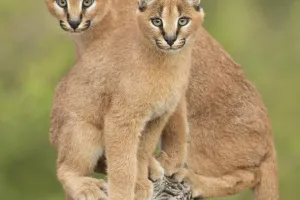When it comes to the panda, some people will treat them as big pandas in their childhood, and some people mistake them as raccoon. But in fact, the little panda is a species, and its relationship is not close to the big panda and the raccoon. This is because giant pandas belong to the carnivorous bear family, baby raccoons belong to the carnivorous raccoon family, and red pandas belong to the carnivorous red panda family.
Not only is the panda often misunderstood, but even the name will be taken away. Originally, the panda refers to the little panda. But in 1869, the big panda was discovered by French missionary Almand David, and the big panda was named the panda the following year. In order to distinguish them, the little panda had to be called "little panda".
In addition, the size of giant pandas and pandas is significantly different. The giant panda is fat, 1.2-1.8 meters tall, short tail, 80-120 kg, and the most heavier can reach 180 kg. The little panda is much more petite than the giant panda. It has only 40-63 cm in length and a very long tail. It can reach half of the body length.
The little panda usually lives in large tree holes or stone caves and rock seams. At night they will come out to move and find food, and they usually sleep in caves or trees during the day. The little panda is good at climbing, and can often climb to the tree to rest or avoid enemy damage. Because its feet have thick thickened fluff, it is also suitable for walking on the wet moss or rocks. The little panda usually moves slowly, has more tame temperament, and rarely makes sounds. Its hearing and vision are not very good, and the sense of smell is not particularly sensitive.
Panda usually goes out in the form of pair. They do not have the habit of hibernation. In rainy and snowy weather, it is mostly in the gap between the rock or the depths of the large trees to avoid rain and snow. The little panda likes bamboo shoots, tender branches and bamboo leaves, various wild fruits and moss. Sometimes they also prey for birds or other small animals. Panda especially likes food with sweet taste.
When the little panda feels dangerous, it will stand up immediately and open her arms. However, this behavior of the panda was made only when it was suddenly encountered by natural enemies or other animals. If the beast is far away from it, then the little panda usually escapes to the depths of the dense forest or quickly climb to the tree. Because they are good at climbing trees, they often make these beasts helpless to them.
However, in our opinion, the behavior of the little panda looks very cute. Although the little panda will make precautions because of fear, this does not mean that they are very bold. On the contrary, the little panda is very timid. In the zoo, the little panda often hides and does not come out.
The number of wild pandas is very scarce, and its population is only about 3,000. But because of the precious fur of the panda, so far, the little panda is facing risk of poaching. By 2015, the little panda had been listed as an endangered animal. If we do not protect them, maybe they will disappear in our field of vision in the future.


